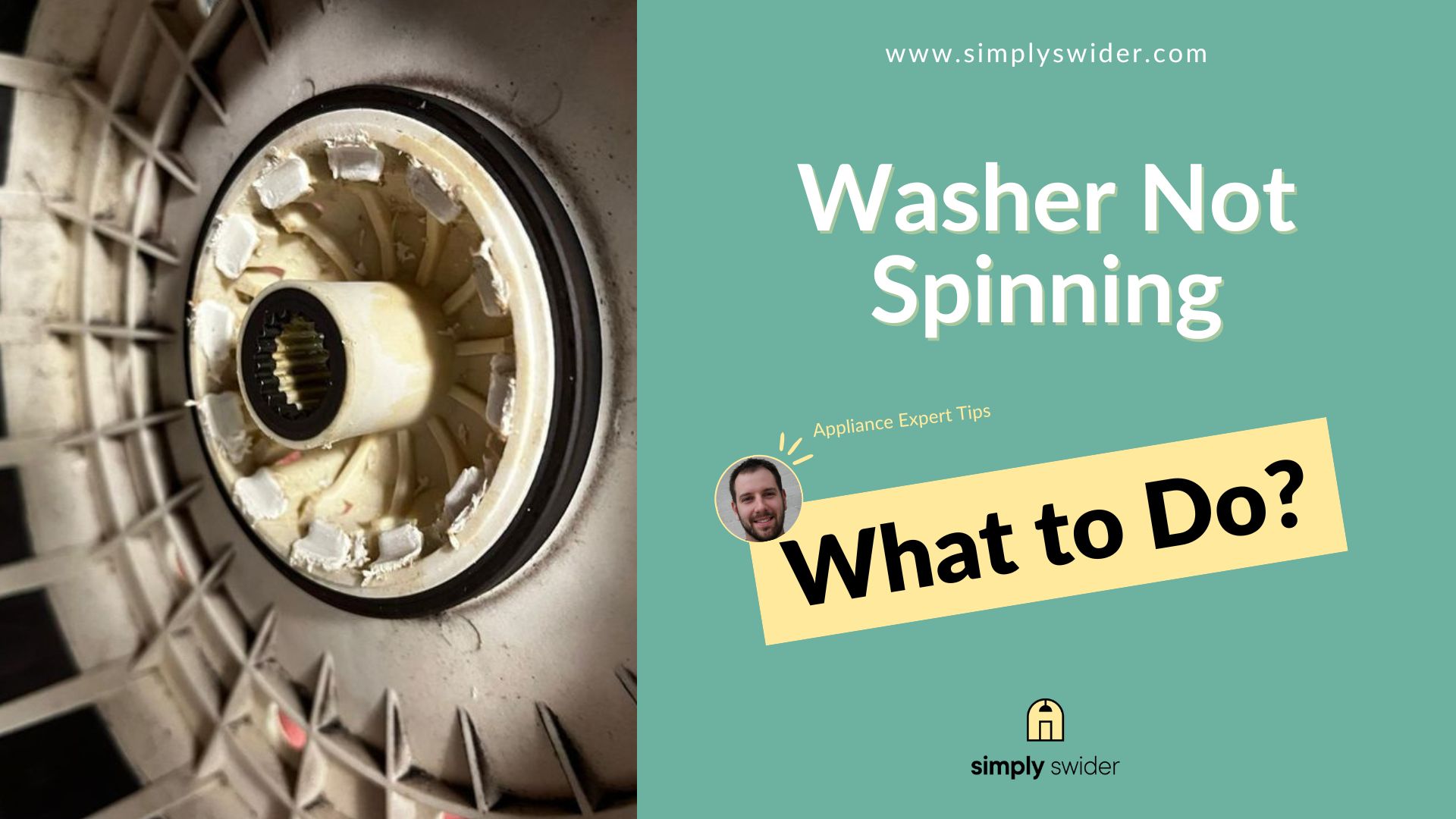Ideally:
Your clothes shouldn’t come out of the washer drenched and sopping wet. So, if you’re facing this challenge, it means your washer isn’t spinning.
Fortunately:
With guidance from Nick Miller, an experienced appliance technician from Louisiana, I will help you get your washer to spin again.
Keep reading this comprehensive guide to understand how to diagnose, troubleshoot and prevent this defect.
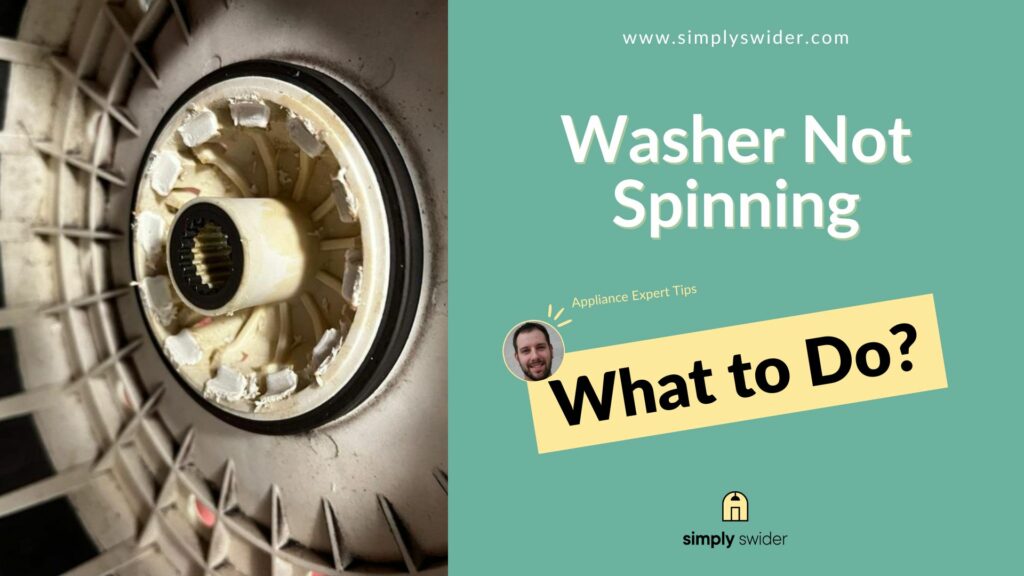
Table of Contents
6 Common Causes and Troubleshooting Steps for a Washer that Won’t Spin
First:
Nick emphasizes the importance of adhering to safety regulations when troubleshooting your washer.
He says:
“You must never forget to unplug your washer, or any other appliance, from the power outlet before troubleshooting to avoid hazards.”
With that in mind, here are a few possible reasons behind a washer not spinning.
| COMMONLY AFFECTED PARTS | ESTIMATED COST |
|---|---|
| Lid switch | $20 – $100 |
| Door lock latch | $20 – $200 |
| Drive motor | $100 – $500 |
| Drive belt | $20 – $80 |
| Drain pump | $30 – $350 |
| Transmission | $100 – $250 |
1. Faulty Lid Switch or Door Lock Latch
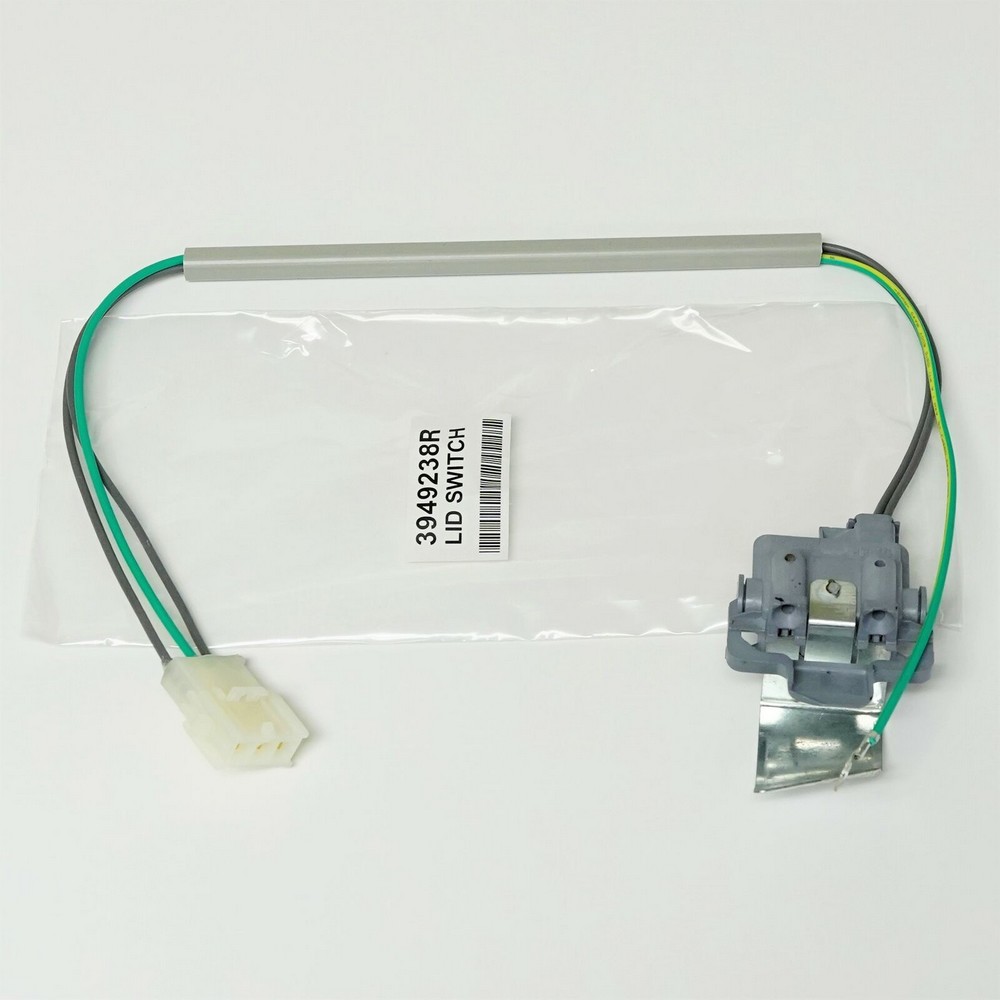
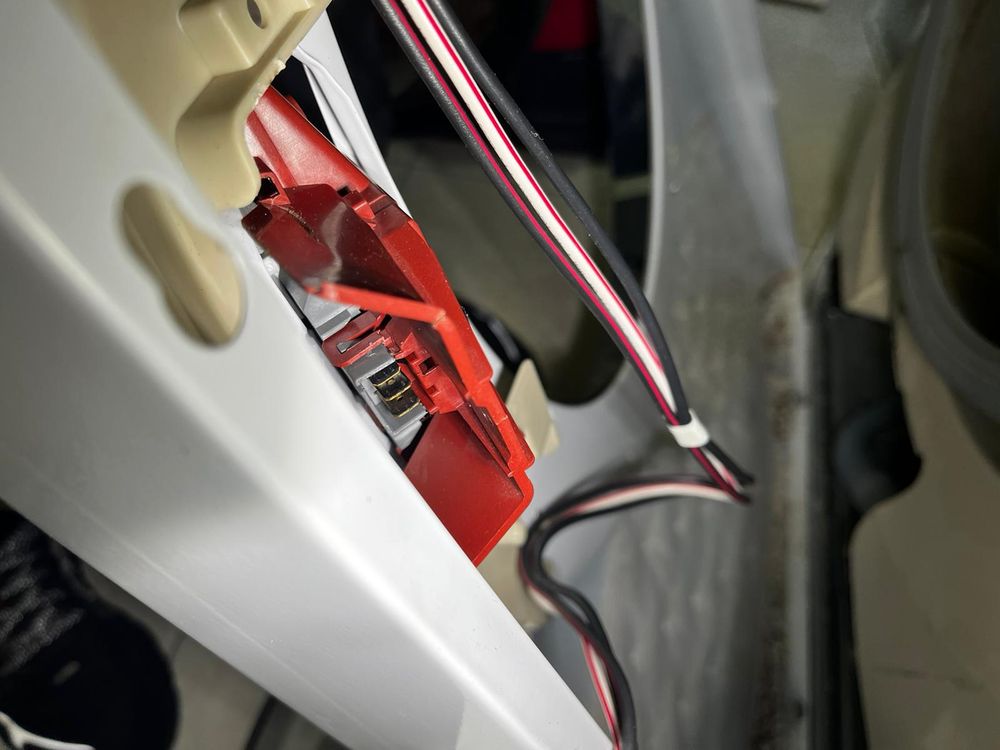
Here’s the thing:
If your top-load washer has difficulty spinning, you’d want to inspect your washer’s lid switch assembly for faults. For a front-load washer, the synonymous component is the door lock latch.
According to Nick:
“These parts are door-locking safety mechanisms designed to prevent the washer from operating any functions while open.”
As such:
Damage to these parts would cause their failure to interact properly with the washer lid or door. This means basic washer processes such as spinning would be hindered until the part is replaced.
That said:
To check if your washer’s lid switch or door lock latch is faulty, listen carefully for a click when closing the lid or door.
If you don’t hear this sound, then there is a high chance the part is compromised.
Here’s what Nick advises you to do:
“Detach the control panel, locate the part, and test for continuity with a multimeter to confirm its damage. If it lacks continuity, it must be replaced.”
| Part | Lid switch Door lock latch |
| Location | Both parts can be found close to the door opening inside the top or front access panel. |
| Ease of troubleshooting | Easy |
| Cost | $20 – $200, depending on the model |
| Repairable | Yes – If it is misaligned No – If it is damaged |
2. Broken or Loose Drive Belt
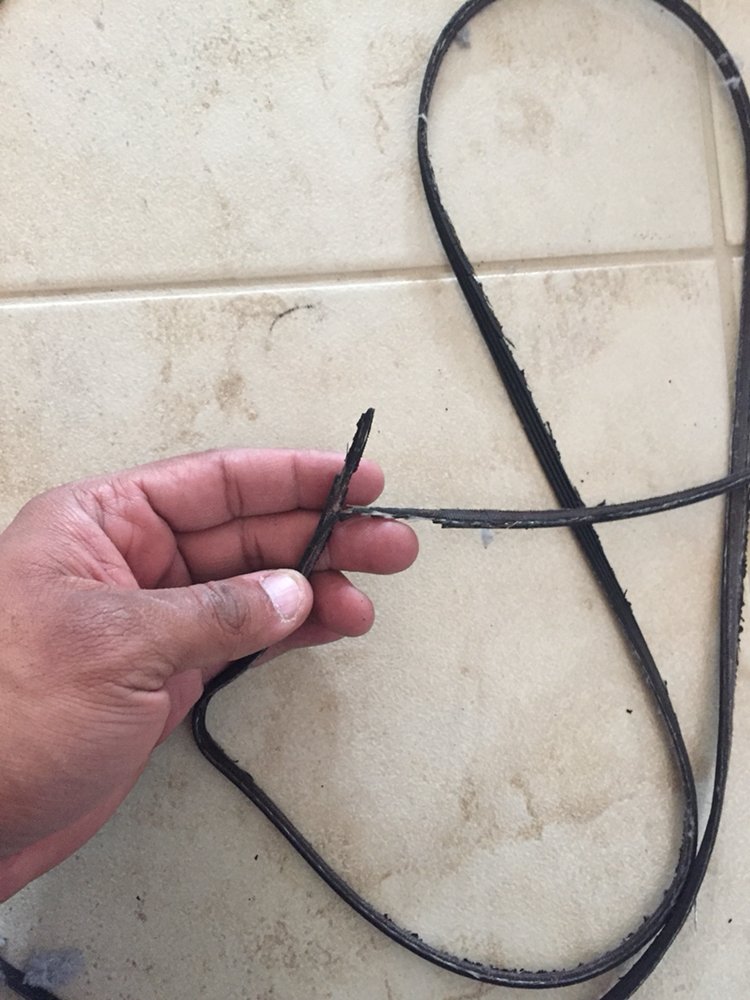
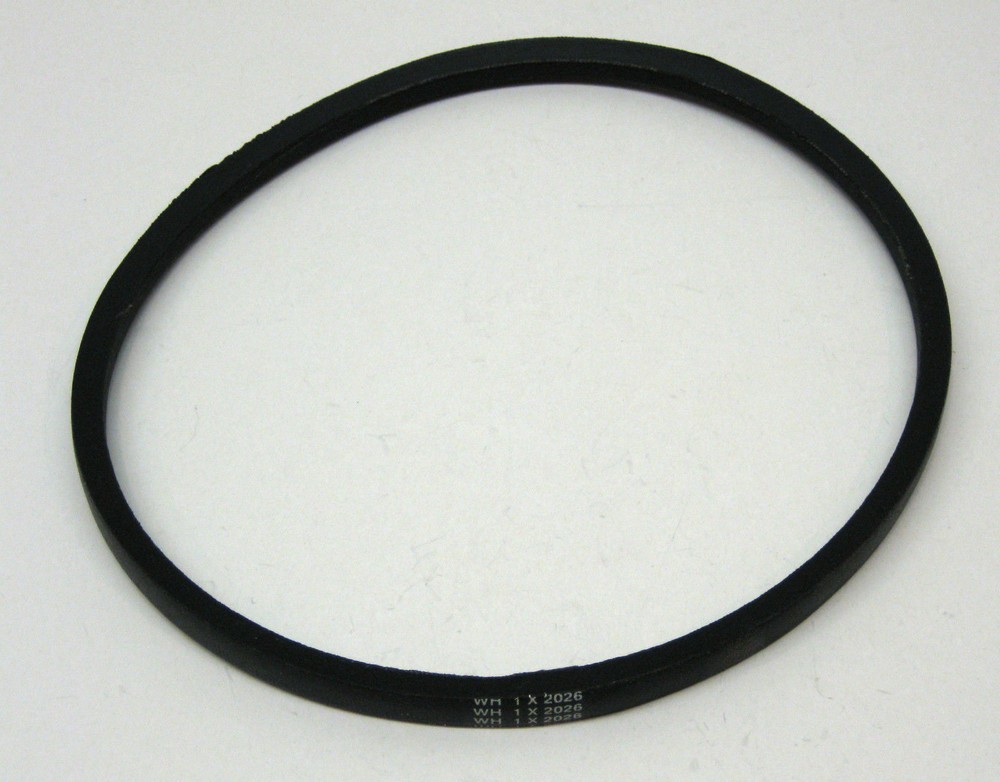
Next:
The drive belt is an essential part of the drive pulley that powers the rotation of the washer. If the drive belt slips out of place because it is stretched, worn out, or outright broken, the washer won’t spin.
From experience:
Nick believes this is one of the most common faults affecting Whirlpool washers that won’t spin. So, if you own a Whirlpool washer, you should be on high alert for any smell of burning rubber hinting at a worn-out drive belt.
To confirm:
Nick suggests inspecting the drive belt for damage by disconnecting the back panel. He says to check if the belt is loose, misaligned, or broken.
Then, replace it if damaged and readjust it if it slipped off the drive pulley.
Note:
You can get a free replacement part from Whirlpool Customer Support if your washer is still under warranty.
| Part | Drive belt |
| Location | It is located at the washer’s bottom behind the front or rear access panel. |
| Ease of troubleshooting | Easy |
| Cost | $20 – $80, depending on the model |
| Repairable | Yes – If it slid off the pulley No – If it is broken or stretched out |
3. Clogged or Damaged Drain Pump
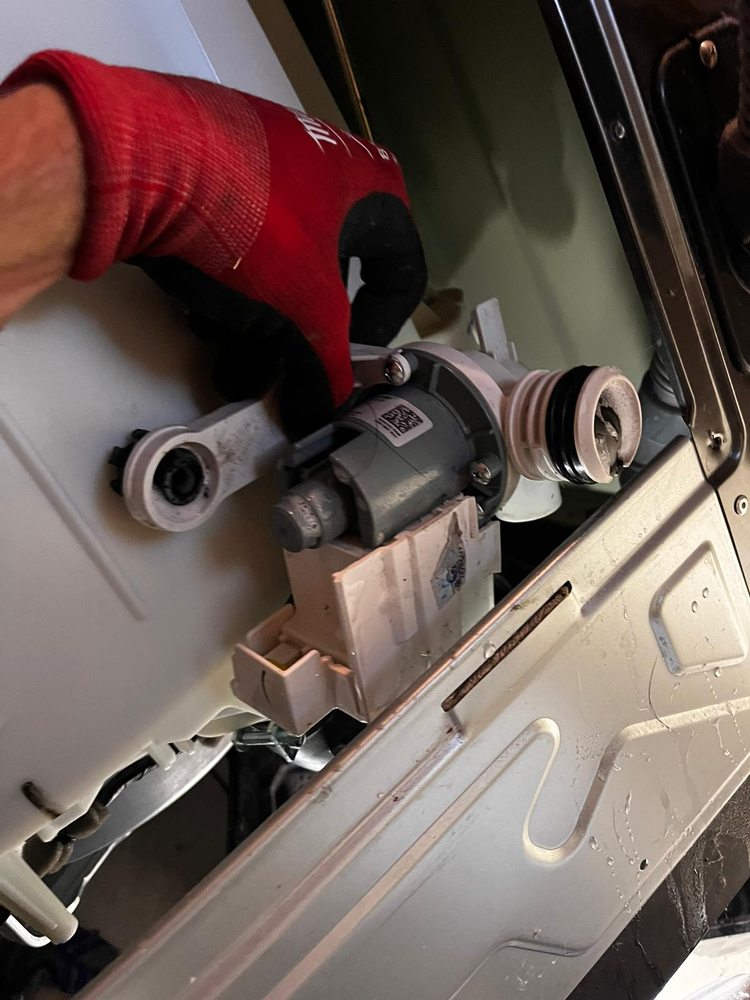
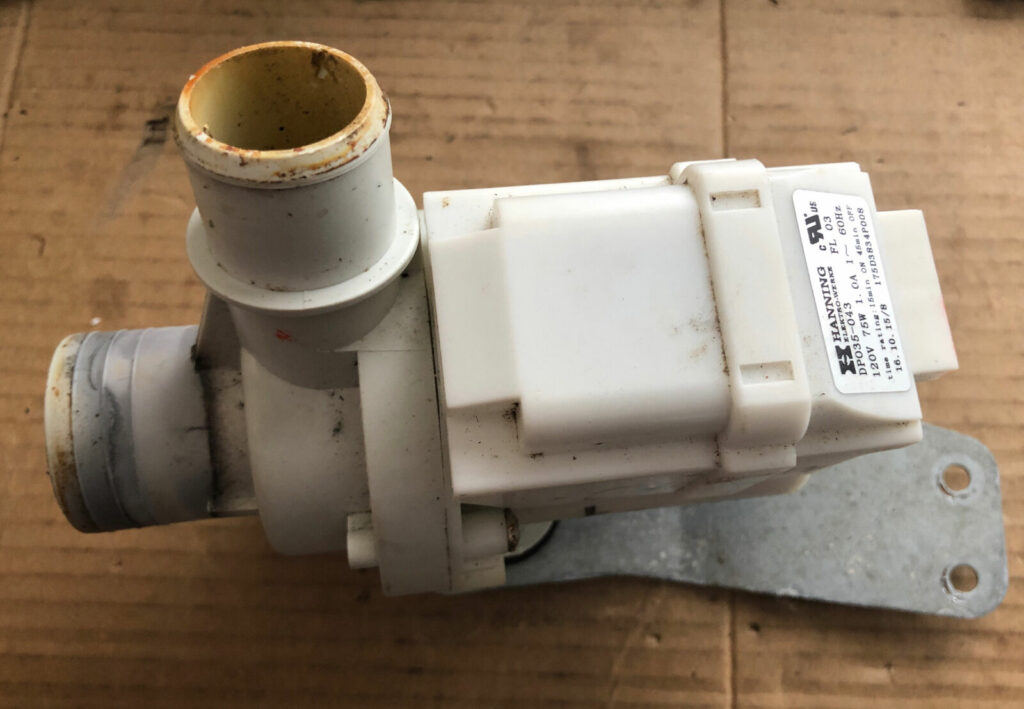
Look:
Drainage issues and spinning issues are often intertwined. So, if your washer’s drain pump or the entire drainage system is flawed, it will have trouble spinning.
Now:
Like a user, Joe Fisher, whose Samsung front-load washer had spinning issues, the flaw could be a clog or visible electrical damage in the drain pump.
Listen carefully:
Can you hear a humming sound while the washer is in the spin cycle but won’t spin? This could mean the drain pump needs to be unclogged or replaced.
So:
Follow Nick’s guidance to clear out the drain pump. First, locate the pump, detach it, and clear out any lodged debris.
Then:
Test the drain pump for electrical continuity, and replace it if damaged. Keep in mind that eBay is a great online store to shop for replacements.
| Part | Drain pump |
| Location | It is located at the bottom of the washer behind the front access panel. |
| Ease of troubleshooting | Moderate |
| Cost | $30 – $350, depending on the model |
| Repairable | Yes – If it is clogged No – If it is damaged |
4. Worn-out or Broken Motor Coupling
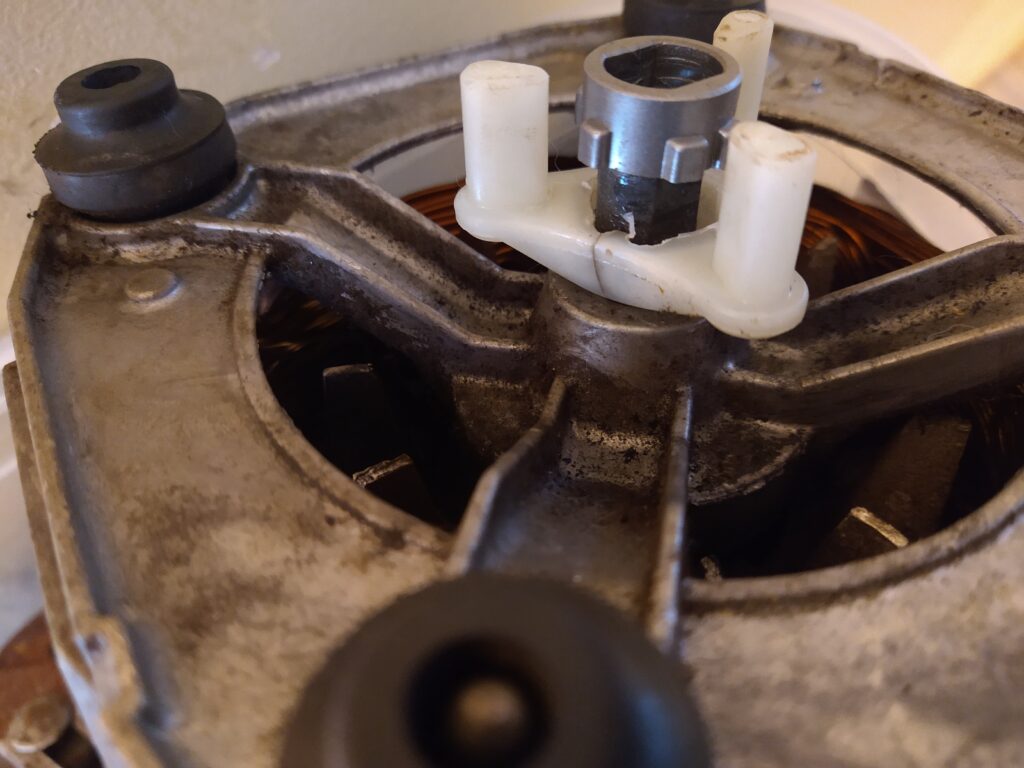
Get this:
The motor coupling is the connector between the transmission and the drive motor, which can wear out with constant use. As such, your washer won’t spin if the coupling is worn out
You see:
The motor coupling is likely damaged if the drive motor is running and your washer is not spinning. Upon discovering this symptom, you must confirm it is broken and replace it.
Moreover:
Nick asserts, “You can tell the motor coupling is damaged if you find black particles or rubber pieces on the floor.”
So:
He recommends disconnecting the access panel and checking the motor coupling for any signs of wear or damage. Replace it if confirmed.
| Part | Motor coupling |
| Location | It is located between the motor and transmission. |
| Ease of troubleshooting | Easy |
| Cost | $10 – $50, depending on the model |
| Repairable | No |
5. Malfunctioning Drive Motor
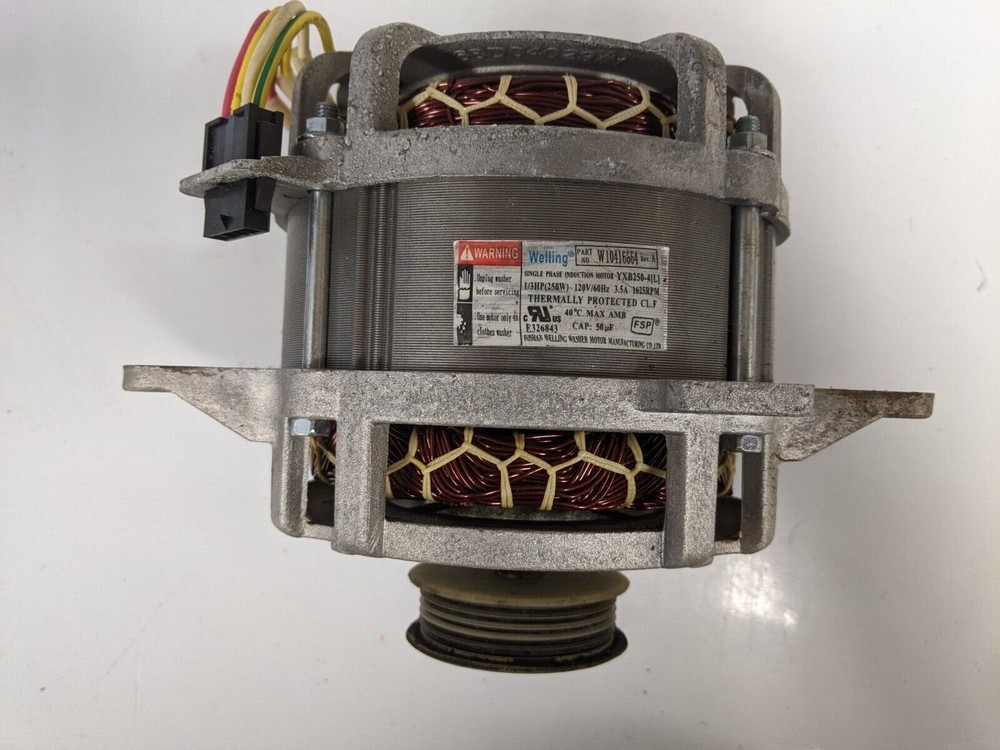
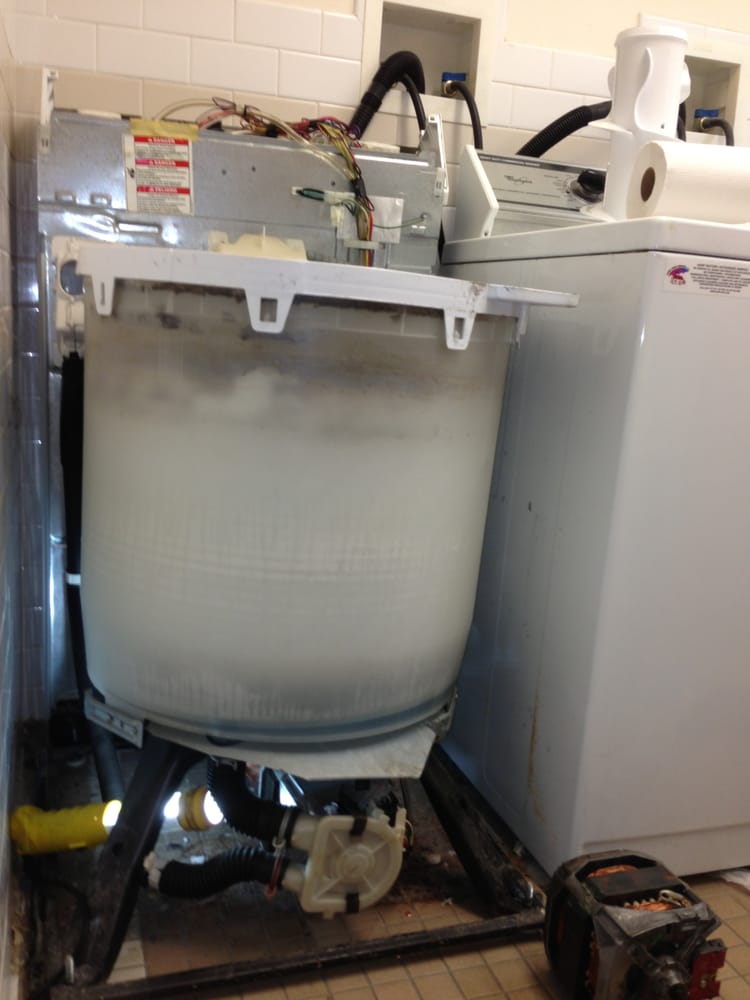
Here’s the thing:
The drive motor provides the rotational force necessary to spin the washer drum. By implication, if the motor is defective, the washer will struggle to spin.
You see:
One Reddit user complained that their Maytag Bravos Front Load washer wasn’t spinning at full speed.
They claimed, “…when spin cycle starts, the drum starts spinning at a lower speed. As speed increases, it starts making loud noises and stops spinning.”
Weighing in on the issue:
Another user suggested a bad transmission, hub, or wash plate might cause it. Furthermore, Nick added that a damaged drive motor, belt, or coupling could be the culprit.
The thing is:
To diagnose this cause, listen for a humming sound during the spin cycle and be sure to check if the drum is spinning.
Then:
According to Nick: “Locate the drive motor, and test it for continuity with a multimeter. If it fails this test, replace it.”
| Part | Drive motor |
| Location | It can be found beneath the wash drum at the bottom of the washer. |
| Ease of troubleshooting | Complex |
| Cost | $100 – $500, depending on the model |
| Repairable | Yes – If it is due to minor issues like loose wiring No – If it is burnt out or severely damaged |
6. Damaged Transmission
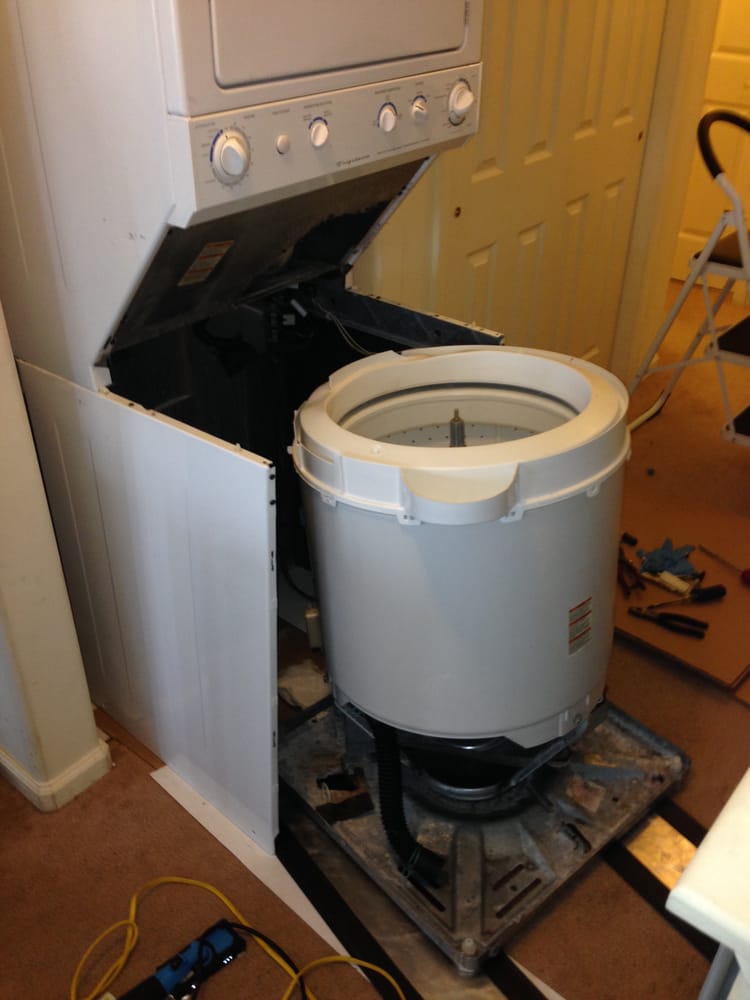
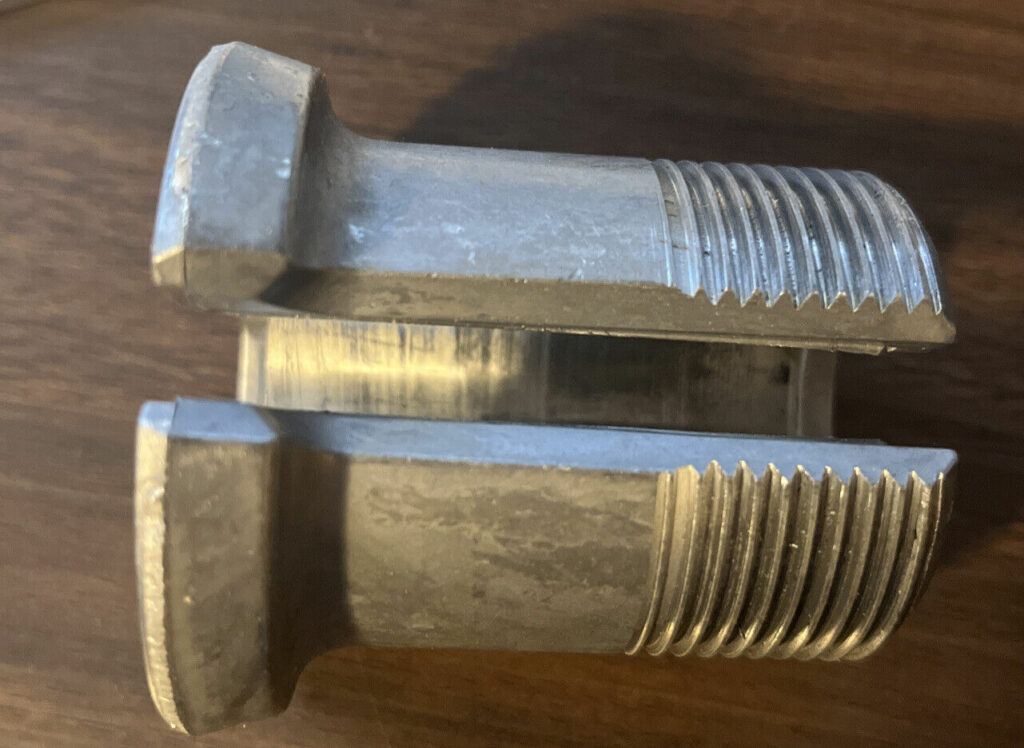
Now:
Nick claims that the problem with a washer that won’t spin could be a damaged transmission. He says, “Because the washer’s transmission works with the drive motor to spin the drum, it is a core component to examine for faults.“
As such:
If you suspect your washer’s transmission could be at fault for your spinning issues, listen for a grinding, rattling, or whining sound.
For instance:
This Reddit user’s LG Tromm Front Load (model WM2277HB) washer refused to spin. They complained, “I noticed the washer was not spinning (but the stator in the back was) and was making a grinding/rattle sound.“
To this:
Another user suggested a possible drain pump clog.
However, Nick asserts, “Unusual grinding or rattling noises from your washer typically denote a motor or transmission malfunction that ultimately leads to spinning issues”
So:
Check the transmission for any signs of damage and replace it if faulty.
| Part | Transmission |
| Location | It is located under the washer drum, close to the drive motor. |
| Ease of troubleshooting | Complex |
| Cost | $100 – $250, depending on the model |
| Repairable | Yes – If it is minor damage No – If it is severe damage |
4 Expert Tips from Simply Swider to Prevent Washer Spinning Issues
1. Regularly Clean and Maintain the Washer
Certainly:
Nick wouldn’t leave you without preventive tips for your washer. And his first tip is to clean your washer regularly.
In his words:
“Adopting a consistent maintenance routine would prevent certain parts from getting damaged or clogged. Remember to focus on the drum, drain filter, and detergent dispenser to diminish build-up.”
Consequently:
This will save you from struggling with spinning issues and other common washer problems.
2. Use the Recommended Amount of Detergent
Now:
Each washer brand has guidelines for using detergent with their washers. For instance, GE Appliances recommends using HE detergent at the manufacturer’s recommended amount.
So, if your GE washer won’t spin, you know what you might be doing wrong.
In any case:
Too much detergent could cause clogs and mineral buildup. As such, you should follow your washer’s detergent recommendations to avoid running into spinning trouble.
3. Load the Washer Appropriately
Believe me:
Loading your washer properly will help prevent any issues with your washer’s spinning mechanism and save you a lot of stress.
Nick says, “A lot of the washer issues are caused by basic user errors such as loading your washer the wrong way.”
Here’s a perspective:
One reader, Emily Davis, reached out for help because her Kenmore washer was not spinning. Upon further probing, she revealed that her washer was vibrating excessively during the cycle.
So:
Nick suggests that a washer vibrating recklessly during any of the cycles could point towards an issue with the spinning mechanism.
He says, “This problem could result from an unbalanced washload, unleveled washer, or faulty suspension springs.“
As such:
You must evenly distribute your wash load in the drum and choose the right cycle setting for your laundry type.
4. Avoid Overloading the Washer
Nick emphasizes this:
Avoid overloading your washer to prevent struggling with spinning issues. It could become unbalanced when you stuff more than enough laundry into the tub.
And you know what that means.
Conclusion
As you can see:
Regardless of your washer brand, it is prone to certain defects that could cause it to stop spinning your laundry dry.
And troubleshooting your washer could require a mix of simple and technical steps.
Here’s what to do when your washer won’t spin:
- Unplug the washer from the power source.
- Replace the faulty lid switch or door lock latch.
- Inspect the drive belt.
- Clean or replace the drain pump.
- Replace the broken motor coupling.
- Test the drive motor.
- Examine the transmission.
Similarly:
Nick dotes on the importance of consistent maintenance practices for your washer’s health.
However:
Some issues affecting your washer’s spinning mechanism may call for the expertise of a professional.
You can call your washer brand’s customer service hotline or contact an appliance technician, like Nick, for assistance.
Remember to:
Share your troubleshooting experience, thoughts, or questions in the comment section below. I’ll be on the lookout for them!
Frequently Asked Questions
Besides general user errors such as overloading your washer and selecting the wrong cycle setting, your washer might not spin for some technical reasons. These include a damaged lid switch, drive belt, motor, drain pump, transmission, or motor coupling.
If your washer doesn’t complete the spin cycle or the tub spins slowly, it has a spinning issue. In addition, excessive vibrations, unusual noises, and standing water in the tub are other symptoms of a washer with a faulty spinning mechanism.
Yes, you can repair your washer’s spinning mechanism yourself with the help of expert-backed troubleshooting guides such as this one. All you need to do is detect faulty parts and carefully replace them.
A blockage in the drain hose is one of the most common causes of a washer not spinning. A clogged drain hose will cause more problematic drainage issues and ultimately stop your washer from spinning.
Depending on your washer brand and the cause of the defect, the cost of repairing its spinning malfunctions varies. However, a rough range falls between $120 – $350.

